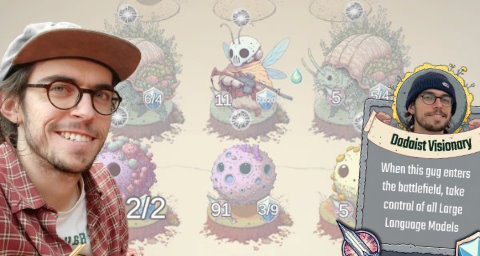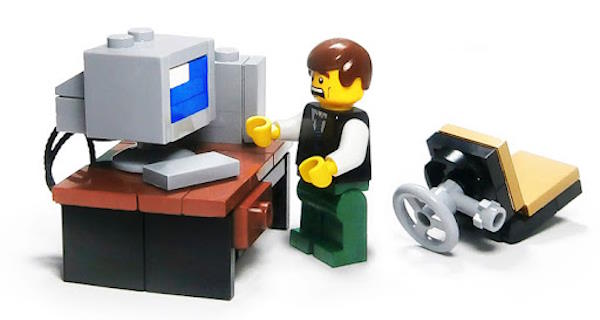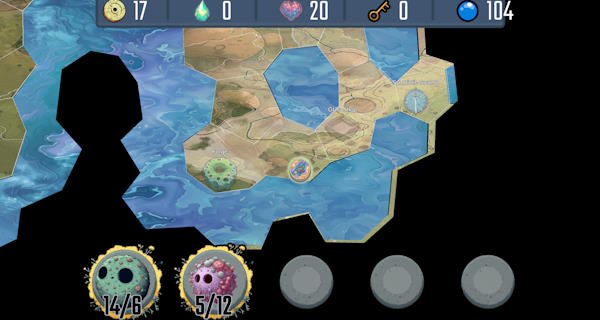Why Do Games Exist? An Interview with Levi Fussell

In the world of game development, creativity and technical expertise go hand in hand. I recently sat down with Levi Fussell, a developer dedicated to pushing the boundaries of what games can be. Our conversation covered his motivations, inspirations, and the challenges he faces in this dynamic industry.
Why Make Games?
“I make games to always challenge what it means for a game to be a game. I'm constantly pushing the medium. It's an academic, philosophical, and psychological interest. Why do games exist? Why do we play them? Why do video games develop the way they do? It's a human thing.”

Baba is You, by Arvi Teikari
Can you think of two games that inspired you on this quest?
“Baba is You is always the one I bring up because of the way it metagames itself. It's simple yet profound. Another one is Norco. It made me realize that games are a valid medium for human fulfillment and cultural impact, much like books and movies. That's something I want to be more pervasive in society.”
What are 'atomic code-based snippets'? Can you explain this in simple terms?
“The problem we faced was writing code that could only perform a single task. Imagine writing code for Mario to move right, but that code can't be reused for anything else. It's rigid and brittle.
“We redesigned our approach to create 'atomic units' of code—small, reusable blocks like Lego pieces. Instead of generating a huge block of code for each task, we build smaller, functional units that can be combined in various ways. This makes our system more flexible and efficient.”

What Levi is talking about. Probably.
You mentioned that the computer writes its own code. Can you describe that briefly?
“We're talking about large language models generating code. Essentially, the game writes and rewrites its own code as the player plays. It's like the game is evolving in real-time, creating a dynamic experience.”
What’s a big problem you had to overcome?
“We had to produce a demo in eight weeks for Gamescom in Cologne. Initially, we didn't have a clear vision of what was essential for the demo. As we progressed, we realized we had over-spec'd—meaning we planned too much.

GUG's Realm Map
“We decided to cut the realm generation because 50% of our content was tied to it, and it had a lot of unknowns. Removing it reduced the burden on every part of development. It was a natural choice to focus on what was truly important.”
Were there any other solutions you considered but didn't pursue?
“Not really. When the problems arose, it was clear what was excessive. Cutting the realm map was the only viable solution to keep us on track.”
GUG
Levi is working on GUG, a roguelike creature battler featuring procedurally-generated creatures. You can wishlist it on Steam.

In the world of game development, creativity and technical expertise go hand in hand. I recently sat down with Levi Fussell, a developer dedicated to pushing the boundaries of what games can be. Our conversation covered his motivations, inspirations, and the challenges he faces in this dynamic industry.
Why Make Games?
“I make games to always challenge what it means for a game to be a game. I'm constantly pushing the medium. It's an academic, philosophical, and psychological interest. Why do games exist? Why do we play them? Why do video games develop the way they do? It's a human thing.”

Baba is You, by Arvi Teikari
Can you think of two games that inspired you on this quest?
“Baba is You is always the one I bring up because of the way it metagames itself. It's simple yet profound. Another one is Norco. It made me realize that games are a valid medium for human fulfillment and cultural impact, much like books and movies. That's something I want to be more pervasive in society.”
What are 'atomic code-based snippets'? Can you explain this in simple terms?
“The problem we faced was writing code that could only perform a single task. Imagine writing code for Mario to move right, but that code can't be reused for anything else. It's rigid and brittle.
“We redesigned our approach to create 'atomic units' of code—small, reusable blocks like Lego pieces. Instead of generating a huge block of code for each task, we build smaller, functional units that can be combined in various ways. This makes our system more flexible and efficient.”

What Levi is talking about. Probably.
You mentioned that the computer writes its own code. Can you describe that briefly?
“We're talking about large language models generating code. Essentially, the game writes and rewrites its own code as the player plays. It's like the game is evolving in real-time, creating a dynamic experience.”
What’s a big problem you had to overcome?
“We had to produce a demo in eight weeks for Gamescom in Cologne. Initially, we didn't have a clear vision of what was essential for the demo. As we progressed, we realized we had over-spec'd—meaning we planned too much.

GUG's Realm Map
“We decided to cut the realm generation because 50% of our content was tied to it, and it had a lot of unknowns. Removing it reduced the burden on every part of development. It was a natural choice to focus on what was truly important.”
Were there any other solutions you considered but didn't pursue?
“Not really. When the problems arose, it was clear what was excessive. Cutting the realm map was the only viable solution to keep us on track.”
GUG
Levi is working on GUG, a roguelike creature battler featuring procedurally-generated creatures. You can wishlist it on Steam.